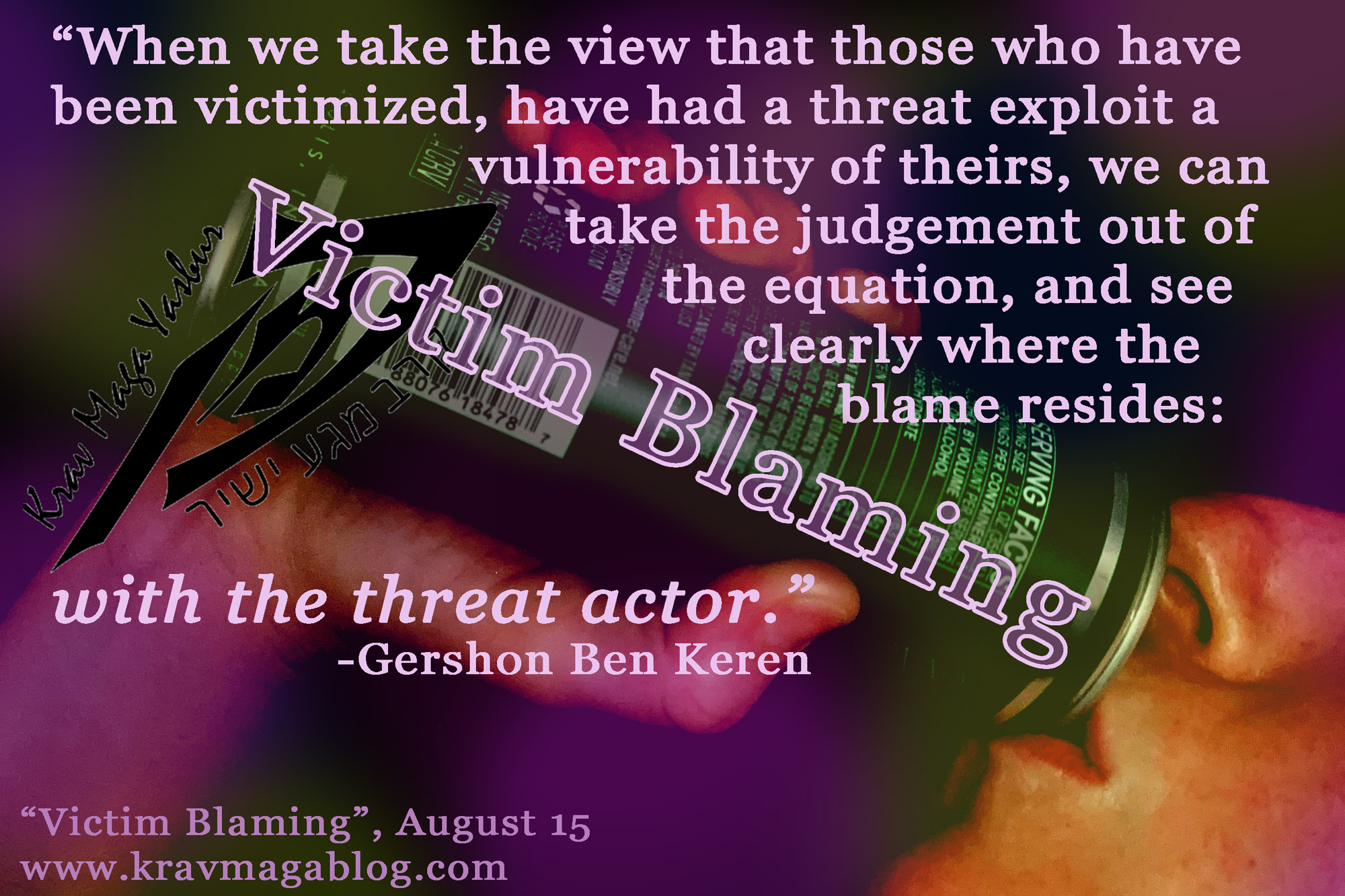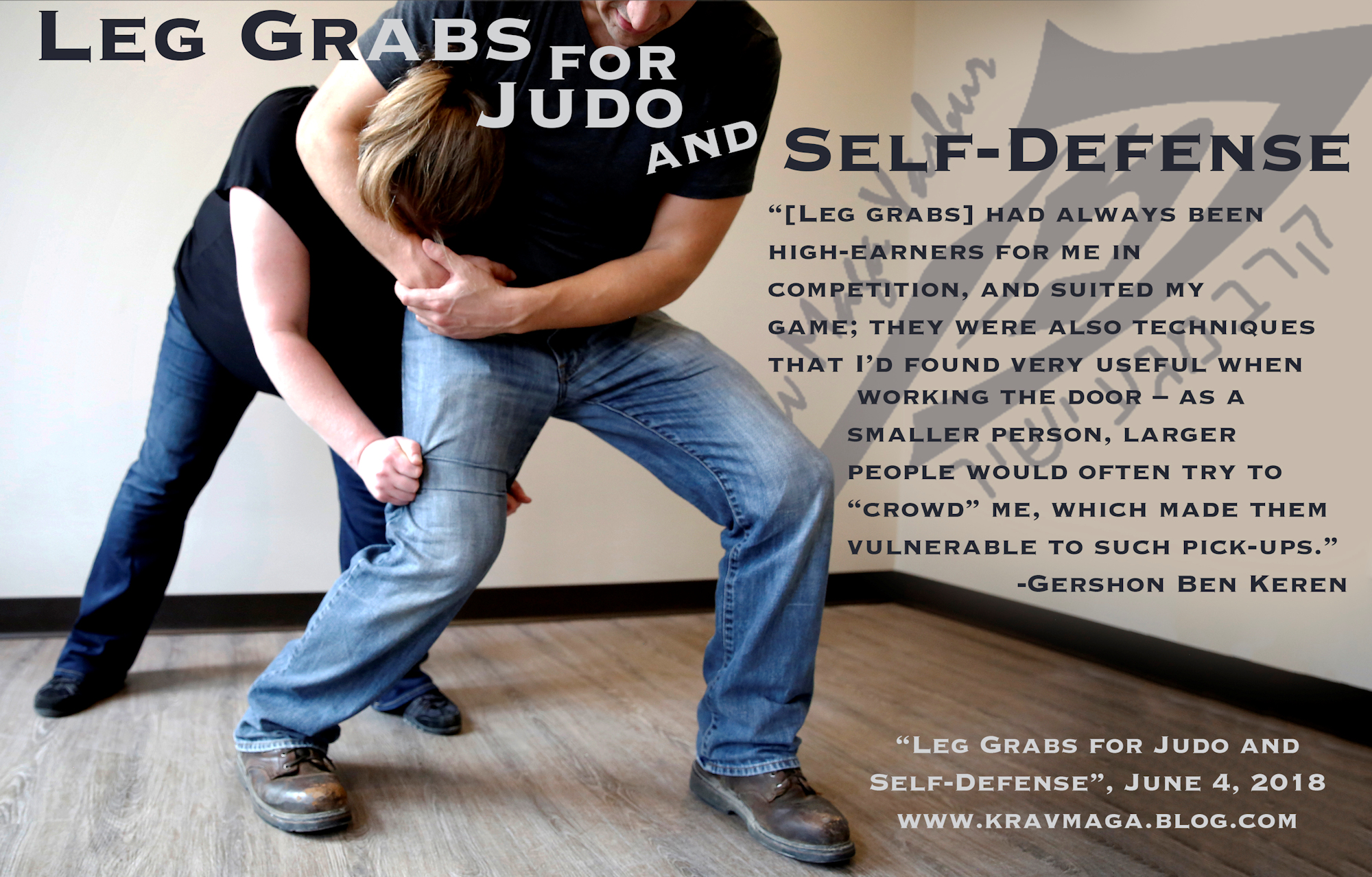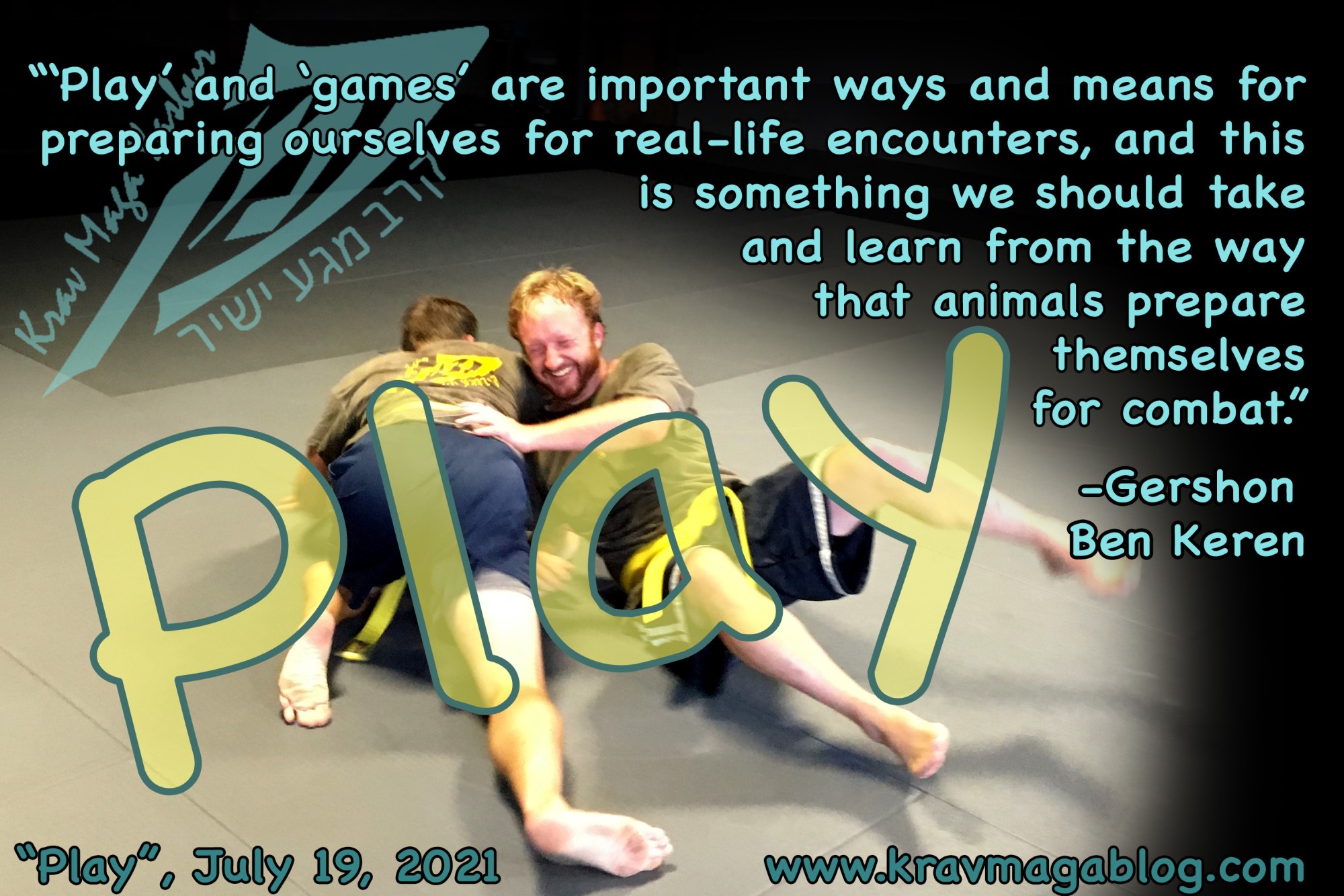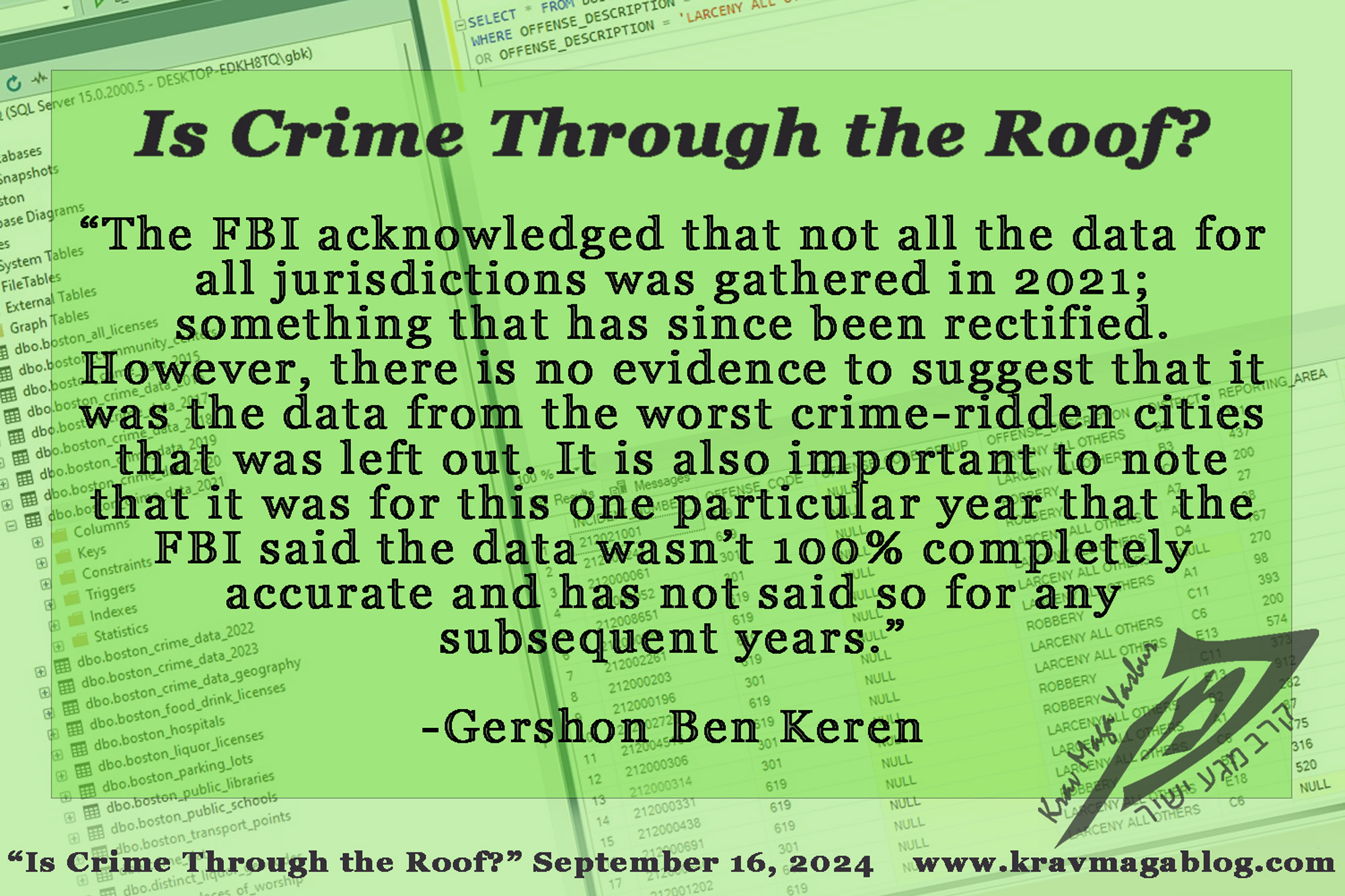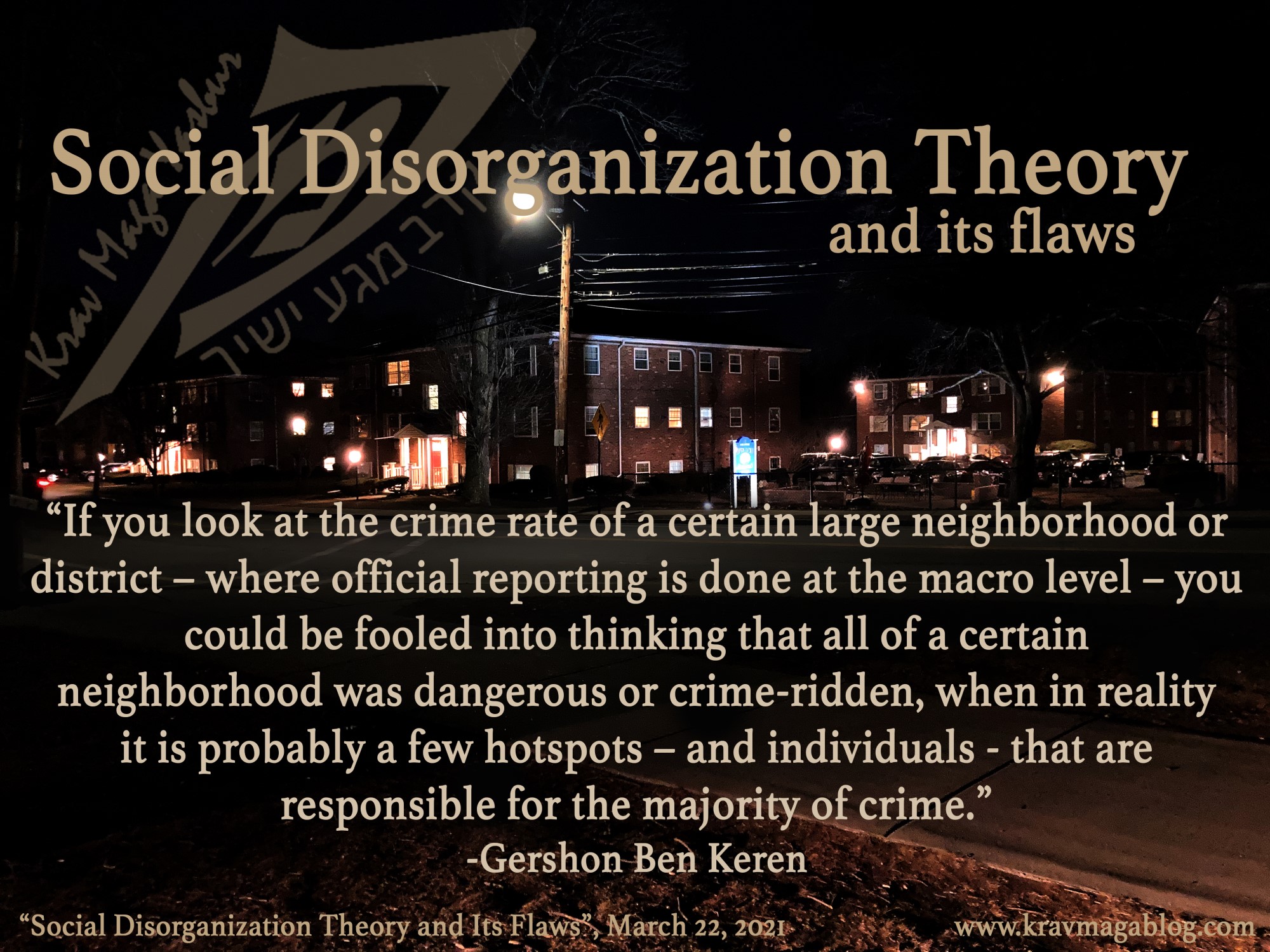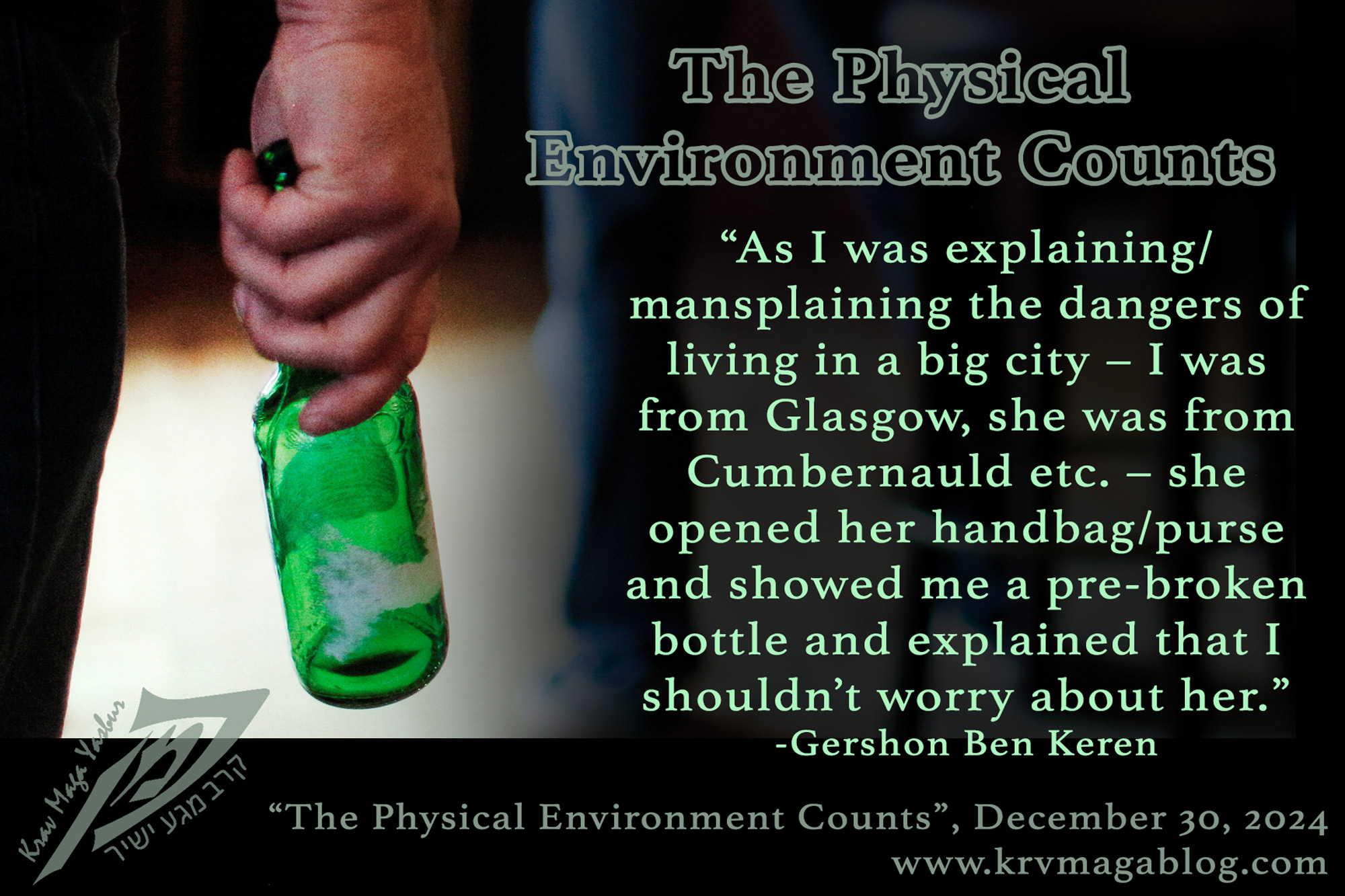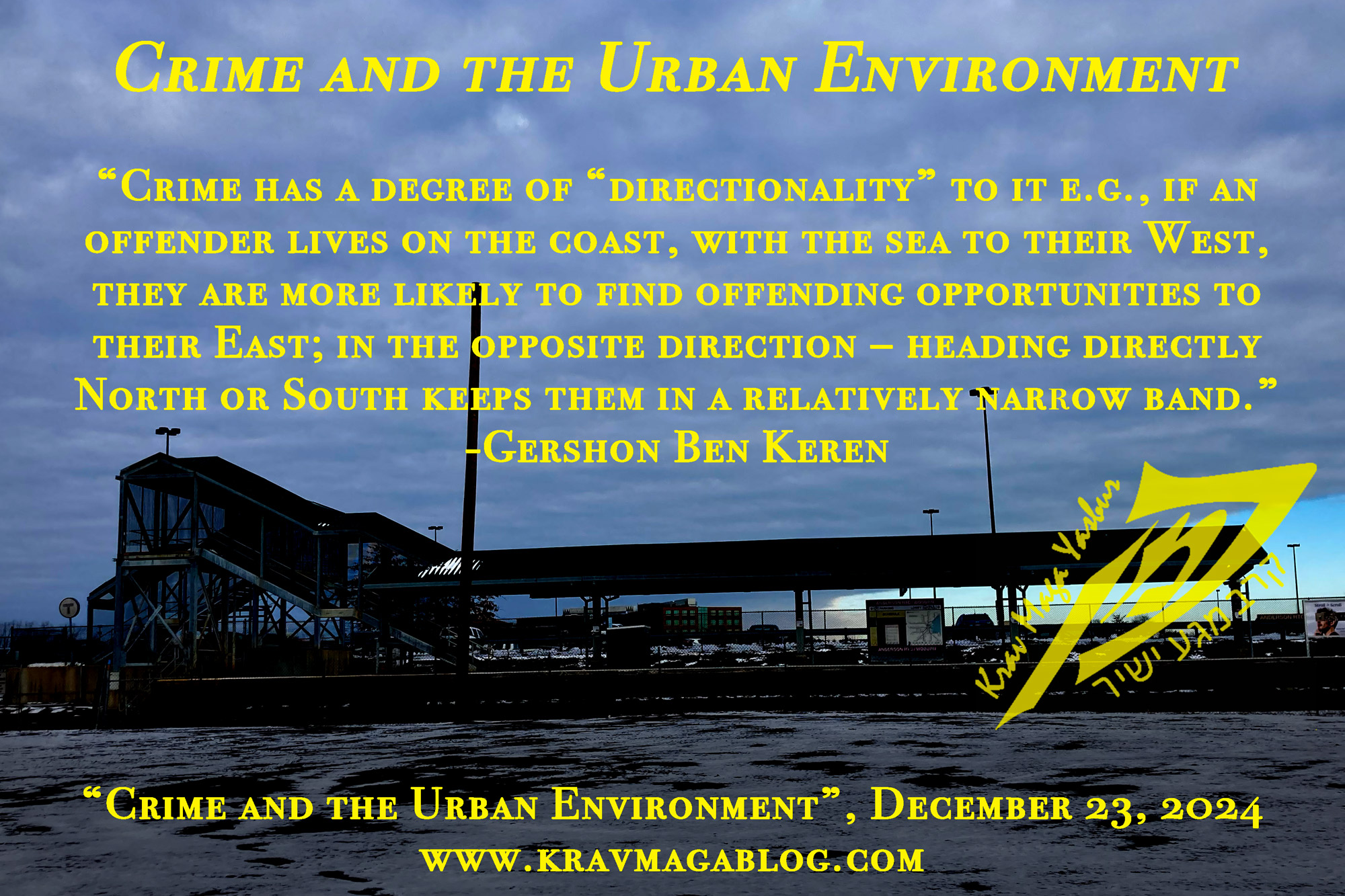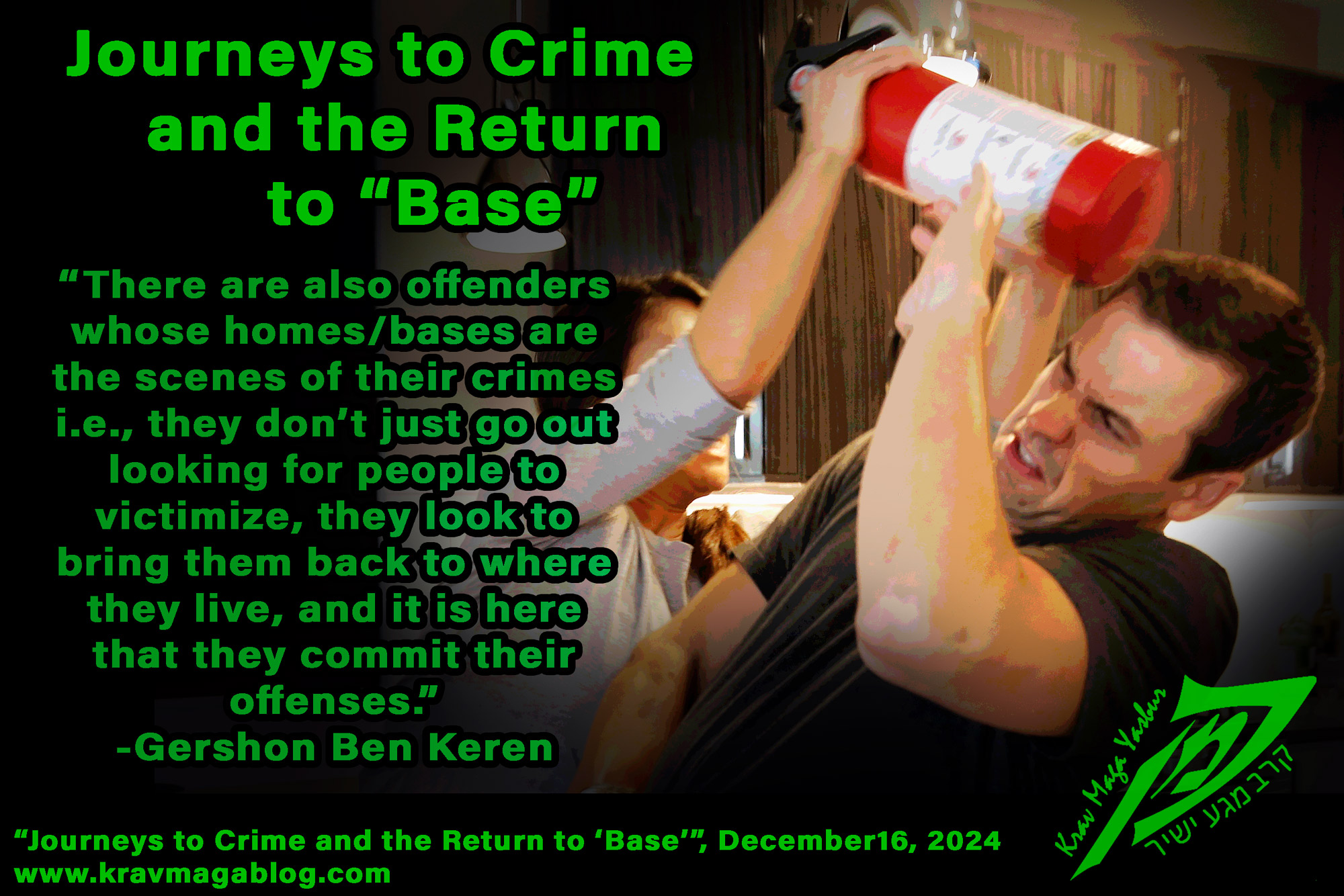Social Disorganization Theory & Its Flaws, is an article written by Gershon Ben Keren, a 5th Degree Black Belt in Krav Maga, who teaches Krav Maga in Boston, MA. He has also authored three Amazon best-Selling Books on Krav Maga.
In criminology there tends to be two types of theory, one which emphasizes people and another which emphasizes places. Shaw and McKay’s Social Disorganization theory, looks at how places create and develop criminality i.e., people are a product of their environments – both physical and social – and when certain factors come together it can create a subculture - that breeds crime etc. The theory built on others including Park and Burgess’s Concentric Zone Model, that proposed cities would naturally “evolve” to have five, distinct concentric rings, with the more affluent and physically mobile classes, moving out to the edge of the city, where there was more land, and the inner-city rings being populated by those who couldn’t afford to live in the suburbs, with these zones being characterized by poorly maintained/unkempt building etc., with little sense of neighborhood etc. Crime would flourish in these areas partly because young people would create their own communities/subcultures, in the absence of more formal ones that followed certain rules/protocols, such as not playing loud music after dark, public drinking etc. If a neighborhood didn’t/couldn’t police itself, there would be individuals who would take advantage of these freedoms, and engage in anti-social behaviors, which others would adopt as well.
Shaw and McKay, weren’t concerned with providing a theory that explained all crimes, but one that could largely explain “street crimes”, such as robbery and theft. In their findings they discovered that crime rates appeared to follow the concentric model of Park and Burgess, with the majority of crimes being committed in the “second circle”, just outside the city center, which was characterized by urban decay, poverty, and a high turnover of residents. However, subsequent research has found that Social Disorganization theory, is less than conclusive, and that many cities don’t adhere to what for a relatively long time was a widely accepted theory. In this article I want to look at some aspects of the theory, along with others and how these relate and explain bad/high crime neighborhoods.
One of the problems with the theory is that it is based upon an assumption of stability over time e.g., that a bad neighborhood largely stays a bad neighborhood – that is those neighborhoods in the second concentric circle, stay high crime locales; and that there is an inevitability concerning this. In its original form, the idea of areas rejuvenating, and others deteriorating over time wasn’t a feature of the theory. Some interesting longitudinal studies – including a notable one in Sheffield, UK, in the late 60’s – showed how a certain locale could have a significant “tipping point”, where for a number of reasons it quickly developed a significant crime rate, and reputation. What researchers found was that once this happened, things largely stayed this way. In a comparison of two council estates (public projects), they found that as soon as one was seen to be a bad place to live, it influenced where those in charge of determining where families lived, tended to place older more “established’ families in the estate which had the better reputation. This “bias” of housing certain families in one locale and others in another, helped maintain the reputation of both. When I first moved to London, I had the same experience with realtors, who would initially ignore my budget, and try and direct me to properties in rougher neighborhoods, probably based on the fact that I always had stubble, cared little about how I dressed/looked, and spoke with a Scottish accent. On many occasions – with different agents and agencies – I was steered to properties in locations which didn’t meet my requirements and seemed to be based on a perception of the type of locale the realtor obviously thought I should be living in (even when this would make them a lower commission). Once a neighborhood gets a reputation, it has a hard time shaking it.
One aspect that has become more prevalent in criminology since Shaw and McKay’s day, is the importance of studying crime at the micro-level. If you look at the crime rate of a certain large neighborhood or district – where official reporting is done at the macro level – you could be fooled into thinking that all of a certain neighborhood was dangerous or crime-ridden, when in reality it is probably a few hotspots – and individuals - that are responsible for the majority of crime. Many years ago, I lived in Toxteth, Liverpool, a locale that has an extremely bad reputation throughout the UK – largely based on the riots that took place there in the 1980’s. However, the part of Toxteth I lived in was lovely, there were certain streets and areas that I knew it was inadvisable to go to, but in the time I lived there, nothing ever happened to me. If I compare this with a house in Chiswick, London I rented – a neighborhood that gave off the appearance of being the safest place on the planet to live – but where there was a public phonebook outside, which the local drug pushers used to use to set up deals, and the previous tenant was wanted by just about every bailiff in the South of England, I had several encounters with individuals I wouldn’t have expected to come into contact with based on my postcode/zip code. In most neighborhoods with a bad reputation, as well as those with a good reputation, there are places to avoid, and places which are low risk. A street crime such as a robbery needs a small footprint upon which to be committed, and those “footprints” tend to be clustered close together.
When we look at neighborhoods with high crime rates, we really need to drill down to get the full story. I have no doubt that certain environments/places can encourage criminality for a number of reasons and create subcultures which promote it, however factors such as high resident turnover, which McKay and Shaw cite as a reason for social disorganization, has never been universally/conclusively shown to be a driver of high crime rates. When we want to understand why bad neighborhoods became viewed as bad, and continue to be seen as bad, we need to start looking at other factors, such as the influence that one or two individuals/families can have in defining how a locale operates and is seen to operate etc.
0 COMMENTS